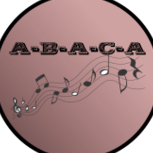-
Posts
9,210 -
Joined
-
Last visited
-
Days Won
59
Everything posted by abacab
-

Free/Open Source Vital: Anyone Using It?
abacab replied to Sridhar Raghavan's topic in Instruments & Effects
Probably not, as I have no idea what that is... -
Version 1.5.0 Release Notes (March 29, 2022): Improvements ● [macOS] Support for hardware-accelerated graphics via Metal ● [Ampire] Faster preset switching ● [Ampire] Optimized IR resampling Fixes ● [Ampire] Audio clicks when toggling plug-in processing on/off ● [Ampire HD Pack] Metal Machine+ computes invalid audio data from high input amplitudes ● [macOS] "Manage Plug-ins" button has no function when Finder option "Show all filename extensions" is set ● [macOS ≤ 10.15] Ampire causes CPU spikes and drop-outs ● [VT-1] Metering input selector switch state not recalled ● [macOS] Fat Channel VST3 plug-in window resize issue in Cubase 10 ● [macOS Apple Silicon] AU does not draw UI in Ableton Live 11 ● [macOS Monterey] Possible crash as soon as new extensions are installed Known issues ● [Ableton Live] AudioUnit plug-ins are not fully compatible. Please use the VST3 version
- 1 reply
-
- 2
-

-

-
Good thing that I don't have a spare $1399 sitting around... Would probably settle for a Sensel Morph, but they are perpetually out of stock. https://morph.sensel.com/pages/morph-availability
-

Free/Open Source Vital: Anyone Using It?
abacab replied to Sridhar Raghavan's topic in Instruments & Effects
And rolls! -
It is 28 instruments. I meant to type that above but my keyboard inserted 38 instead. Fixed!
-
The V Collection's biggest difference with IK Syntronik and UVI (I also have Syntronik Deluxe and UVI Digital Synsations) is that the Arturia Synths are modeled emulations with detailed original synth front panels and parameter controls. Not sample based clones with fake one-size-fits-all unrealistic UI panels. And since they are modeled, the synths have a relatively small disk footprint and the presets load almost instantly. https://www.arturia.com/products/analog-classics/v-collection/details
-
$1399 USD list price. Got two emails from ROLI, and no discount code. There isn't even a place to enter one in the shopping cart.
-
You have Analog Lab V (V as in version 5). V (as in virtual) Collection 8 is a complete product that includes Analog Lab V plus the full suite of 38 28 software instruments that are represented by Analog Lab presets. You also get more presets in the full collection. The Analog Lab is an excellent preset browser & player only (fine for many folks), but if you own the full software instruments you will be able to open the full emulated synth interfaces for parameter editing, as well as create and save your own presets. Analog Lab still makes a very useful front end for browsing the collection, and even allows you to layer 2 synths in a multi preset. Edit: made typo when typing 28 instruments. Fixed!
-
Resistance is futile! You will be assimilated.
-
That's where Steinberg lost me when I was shopping for a new DAW back in 2017 when Gibson bailed out on Cakewalk. They wanted me to buy an eLicenser to just demo Cubase Pro. So I cross-graded to Studio One 3 Pro. No regrets! Now on S1 5 Pro, and it keeps getting better!
-
Yep, I bring my own instruments. Been doing this for a while, and have accumulated many of them. But for first timers, the PreSonus offerings are a great value and sufficient to get rolling.
-
I put my MIDI hardware in a storage closet 10 years ago. Studio One can do anything with in-the-box virtual instruments that I need it to. The rest of the features are a bonanza! The only shortcomings for S1 that I have seen others express is possibly the MIDI hardware support, and post production abilities. Those users claim that Cubase excels in those areas, and would switch to S1 if they were covered more comprehensively. But not an issue for me. No regrets!
-

Free/Open Source Vital: Anyone Using It?
abacab replied to Sridhar Raghavan's topic in Instruments & Effects
-

Free/Open Source Vital: Anyone Using It?
abacab replied to Sridhar Raghavan's topic in Instruments & Effects
-
There are 6 free add-ons available now: https://store.epicgames.com/en-US/all-dlc/total-war-warhammer?sortBy=relevancy&sortDir=DESC&count=40 FYI: If you add the free Assembly Kit, that requires the game to be purchased first. The other free add-ons do not.
-
Got Sparkle as a freebie a couple years ago.
-
There is a free version, as well as Pro for $29.99. https://intermorphic.com/wotja/downloads/
-

Is Erik Norlander a better keyboard player than Jordan Rudess?
abacab replied to abacab's topic in The Coffee House
Yes. Erik owns most of, and sampled all of, the vintage synths for IK Multimedia Syntronik. Not as well known as a musician as Jordan, but has released a number of albums. I was a bit surprised by his Keith Emerson-ish style skills in the above video. He was also co-designer of the Alesis Andromeda A6 analog synth, as well as the original IK UNO analog synth. https://eriknorlander.com/bio Jordan is the long-time keyboard player for Dream Theater. These days he can also be found all over the net doing promo videos for other products displaying his keyboard chops (he makes any instrument sound great), as well as promoting his music technology company, Wizdom Music. https://www.jordanrudess.com/ -
Today is only Mar 27. Try again next weekend!
-

Is Erik Norlander a better keyboard player than Jordan Rudess?
abacab replied to abacab's topic in The Coffee House
Better equipment and playing ability then me all around! I guess that Erik is more prog rock, while Jordan is more prog metal... both great in their respective genres... -
https://store.epicgames.com/en-US/p/total-war-warhammer The critically-acclaimed Total War: WARHAMMER combines a turn-based campaign of epic empire-building with colossal and explosive real-time battles, set within the incredible world of Warhammer Fantasy Battles. Embark on campaigns of conquest as the valiant men of the Empire, the vengeful Dwarfs, the murderous Vampire Counts and the brutal Orcs and Goblins of the Greenskin tribes. Each Race is wholly different with its own unique characters, campaign mechanics, battlefield units and play style.
-

Is Erik Norlander a better keyboard player than Jordan Rudess?
abacab replied to abacab's topic in The Coffee House
Plus Erik co-designed the A6 for Alesis back in the 90's, and more recently sampled all of the synths used in IK Syntronik. I cannot afford a hardware collection like his, so I will have to make do with Syntronik Galaxy (the only Andromeda emulation that I am aware of).



